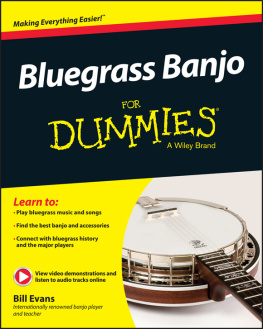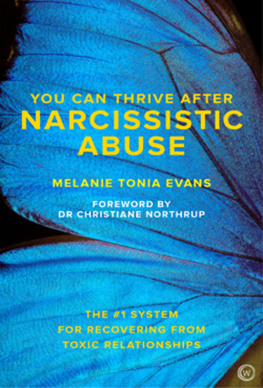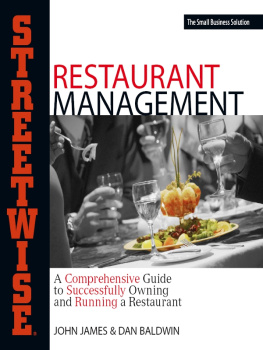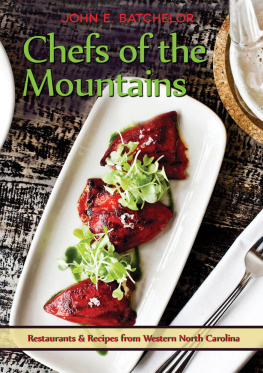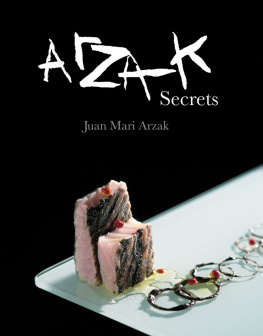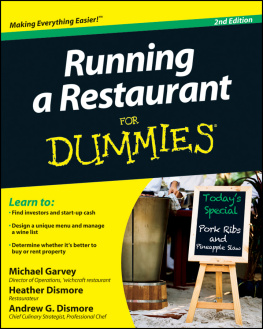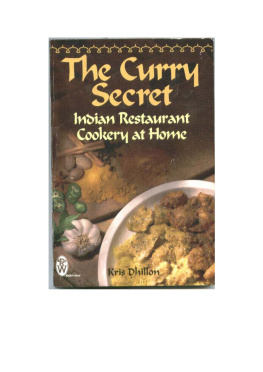MATTHEW EVANS has been a chef and restaurant reviewer.Until recently he was senior restaurant critic at The SydneyMorning Herald. He was editor of The Good Food Guide inNew South Wales, which sells about 40,000 copies a yearacross the state, and a contributing writer for The Age GoodFood Guide in Victoria, which also sells 40,000 copies ayear. He has appeared on television and radio on numerousoccasions, and at one point in his life he ate out on averageten times a week. He contributes regularly to the Herald'sand The Age's 'Good Weekend'. His latest passion is cookingat home.
All rights reserved. No part of this book may be reproduced or transmitted by any person or entity, including internet search engines or retailers, in any form or by any means, electronic or mechanical, including printing, photocopying (except under the statutory exceptions provisions of the Australian Copyright Act 1968), recording, scanning or by any information storage and retrieval system without the prior written permission of Random House Australia. Any unauthorised distribution or use of this text may be a direct infringement of the author's and publisher's rights and those responsible may be liable in law accordingly.
Never Order Chicken on a Monday
ePub ISBN 9781864714906
Kindle ISBN 9781864717532
Original Print Edition
Random House Australia Pty Ltd
Level 3, 100 Pacific Highway,
North Sydney, NSW 2060
www.randomhouse.com.au
Sydney New York Toronto
London Auckland Johannesburg
First published by Random House Australia 2007
Copyright Matthew Evans 2007
This electronic book is sold subject to the condition that it shall not by way of trade or otherwise, be lent, resold, hired out, or otherwise circulated without the publisher's prior consent in any form other than that in which it is published and without a similar condition including this condition being imposed on the subsequent purchaser
National Library of Australia
Cataloguing-in-Publication Entry
Evans, Matthew, 1966.
Never order chicken on a Monday.
ISBN: 9781741666960
1. Evans, Matthew, 1966.
2. Restaurants Australia Anecdotes.
3. Cooks Australia Biography Anecdotes.
4. Food Australia Anecdotes.
5. Cookery Australia Anecdotes.
I. Title.
641.5092
Cover design by Nanette Backhouse
Typeset in Centaur 17/14.5 by Midland Typesetters, Australia
Printed and bound by Griffin Press, South Australia
Writing about eating is like dancing about architecture
it's a really stupid thing to want to do.
With apologies to Elvis Costello
1
If the oysters didn't kill them,
the mashed potato should have
TO THIS DAY it still astounds me. It remains a mystery howthe restaurant I worked in as a teenager never sent anyoneprematurely to their graves. But no-one died: not from theworkload. Not from the various forms of human degradationthat make up the apprenticeship system for chefs inthis country. And not from the knives that flew in thekitchen as tempers flared. Not even from the oysters weserved.
There was, admittedly, at least one casualty in thatrestaurant, when an older bloke choked on his steak andwent to the great diner in the sky. His much youngercompanion was caught on security cameras as she fledthe scene, though it's doubted she was a relative or didanything untoward, except excite the old boy too much.
That aside, though, I don't recall any other deaths atThe Hideously Expensive Canberra Restaurant, where Ispent two and half years as an apprentice despite servingoysters that were on the toxic side of fresh.
It's not a very auspicious start for a food writer of anyreputation. To admit to a background cooking food younot only wouldn't want to eat yourself, but shouldn'tfeed any living thing, is hardly the stuff of a legendarygourmand. As someone who would end up as the chiefrestaurant critic for The Sydney Morning Herald, it's prettyshameful. But as an apprentice at The Hideously ExpensiveCanberra Restaurant I learnt as much about bad food how to cook it, how to spot it, and how to get out ofmaking it as I did about good food. Probably more.
Sometimes we started with great produce and wentbackwards from there. Australia's sexiest bivalves are thevery delicate, indigenous rock oysters, which are best eatenfreshly shucked and straight from the shell, never cookedand hardly dressed. Problem was, where I worked, we didn'tunderstand them too well.
When the oysters arrived in our kitchen they werealready open, a crime hardly imaginable in Europe. Incountries where oysters are understood and loved, to takedelivery of opened oysters is akin to receiving a batch ofopened champagne. It's not just the wrong thing to do; it'sa terrible thing to do. Something so delicate and so marvellousshould be worthy of royal treatment.
Fecund, sweet rock oysters are lasciviously wet with theirown brine, plump and yet never bigger than a man's thumb.
They have a flavour boasting equal parts subtlety andcomplexity as only slow-grown oysters can. Slippery, gentlyiodiney, they're at once both confronting and utterlydesirable, like sex in a shell. But at that time I was stillabout ten years away from the joyous revelation of fresh,pure, immaculate, just-shucked rock oysters. When mypersonal epiphany happened, it was thanks to a seafoodwholesaler who insisted on opening oysters in front of us,and by that time I was running my own kitchen.
But back in 1985, at work in The Hideously ExpensiveCanberra Restaurant, all I knew was what I was told. Andwhat I was told looks damned scary with the benefit ofmore than two decades of hindsight and a working knowledgeof bacteria.
Our oysters were delivered in five dozen boxes, openedand washed by the grower, as were virtually every singlerestaurant's oysters in those days. The gnarly creatures, withtheir triangular shells curving, always, in a clockwise directionfrom the hinge to the jagged fringed tip, housed anugget of meat the size of a teaspoon. They were sandwichedbetween layers of damp paper to keep them moist.
I know now there's no excuse for buying them that waybesides laziness and ignorance. While we may have beenabout 800 metres above sea level, the restaurant waslocated barely two hours from some of the best oysterfarms in the nation. Shame, then, that we completelyshafted nature's bounty.
I certainly didn't know any better. I was a fresh-facedapprentice, eager to learn, but green as grass. I didn't evenswear back then, and I'd yet to discover the joys of privateinvestigators, tetchy celebrity chefs, defamation cases andspinal surgeons. I'd never enjoyed eating an oyster, despitespending all my school holidays on the coast where theythrived, picking fragments of their shells from my feet andknees after days spent exploring, scrambling over the rocksby the water. When I started work I didn't have any ideawhat they should taste like, or how they should be handled.
Our oysters were inordinately popular. For one of thecity's finest diners, boasting the multiculturalism of aGreek boss, a German chef and a menu written in French,it was the oysters that usually outsold all other entrees.They outsold the prawn cocktail, most nights. Theyoutsold the avocado vinaigrette, the crepes with chickenand leek bound with mornay sauce, the smoked trout withmango. Oysters were, and arguably still are, one of themost popular restaurant foods in the nation. That's rightlyso; when they're good, they're great. But when they're notgood, they're scary.
To stop the oysters from slipping we'd lay them onlettuce leaves, the outside leaves from iceberg lettuces (theonly lettuce really, in the early 1980s). If the oystersstarted to dry out on top, which was pretty muchinevitable, we'd wash the long dead bivalves in very saltywater flavoured with bottled lemon juice. If the lettucewent brown on the edges we'd just throw that out and placethe washed oysters on fresh iceberg. For cooked oysters,we'd pipe mashed potato into a circle to help the shellsstick to the metal trays they sat on. The trays would thenbe fired under the intense heat of that amphibiously titledindustrial grill, the salamander.



